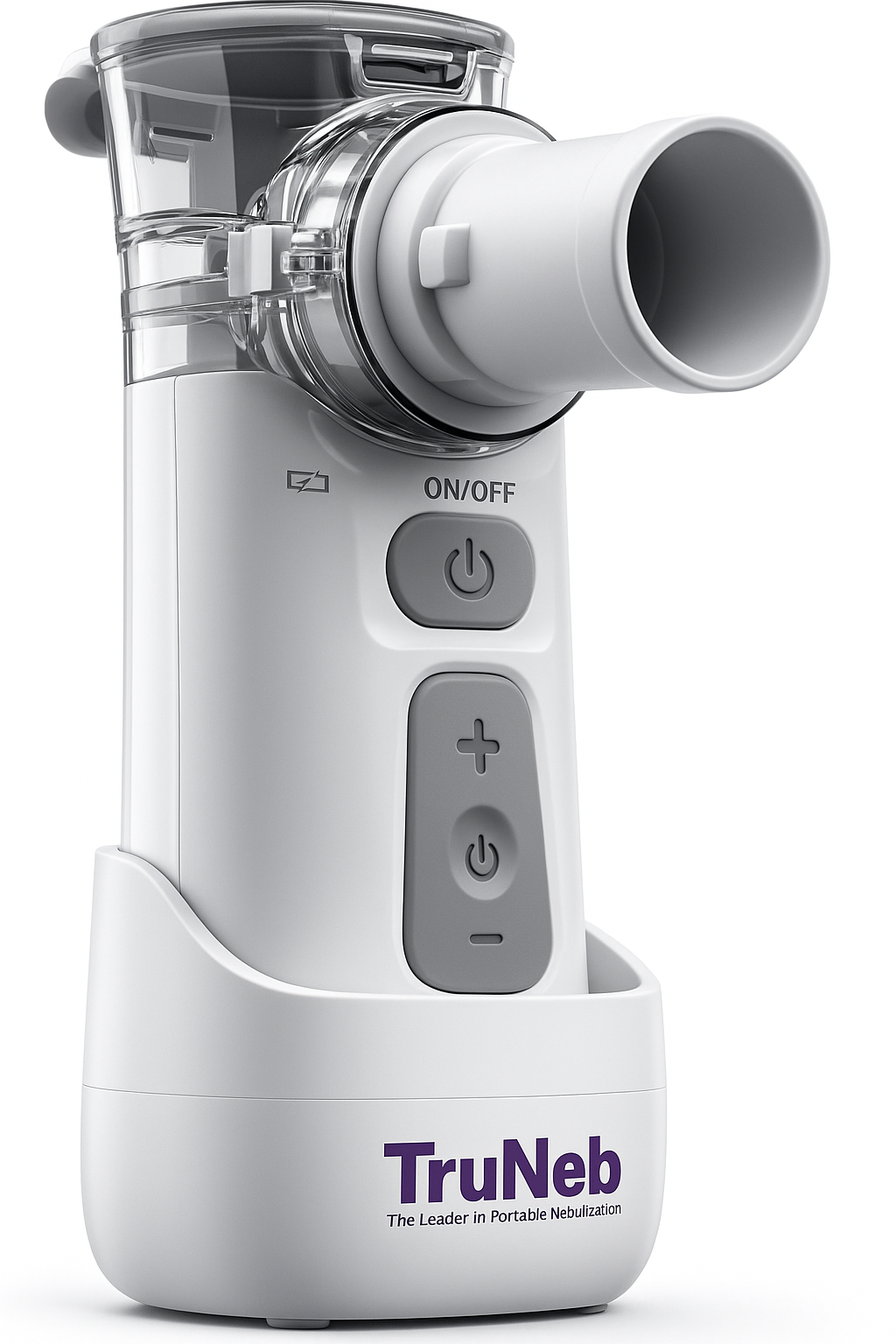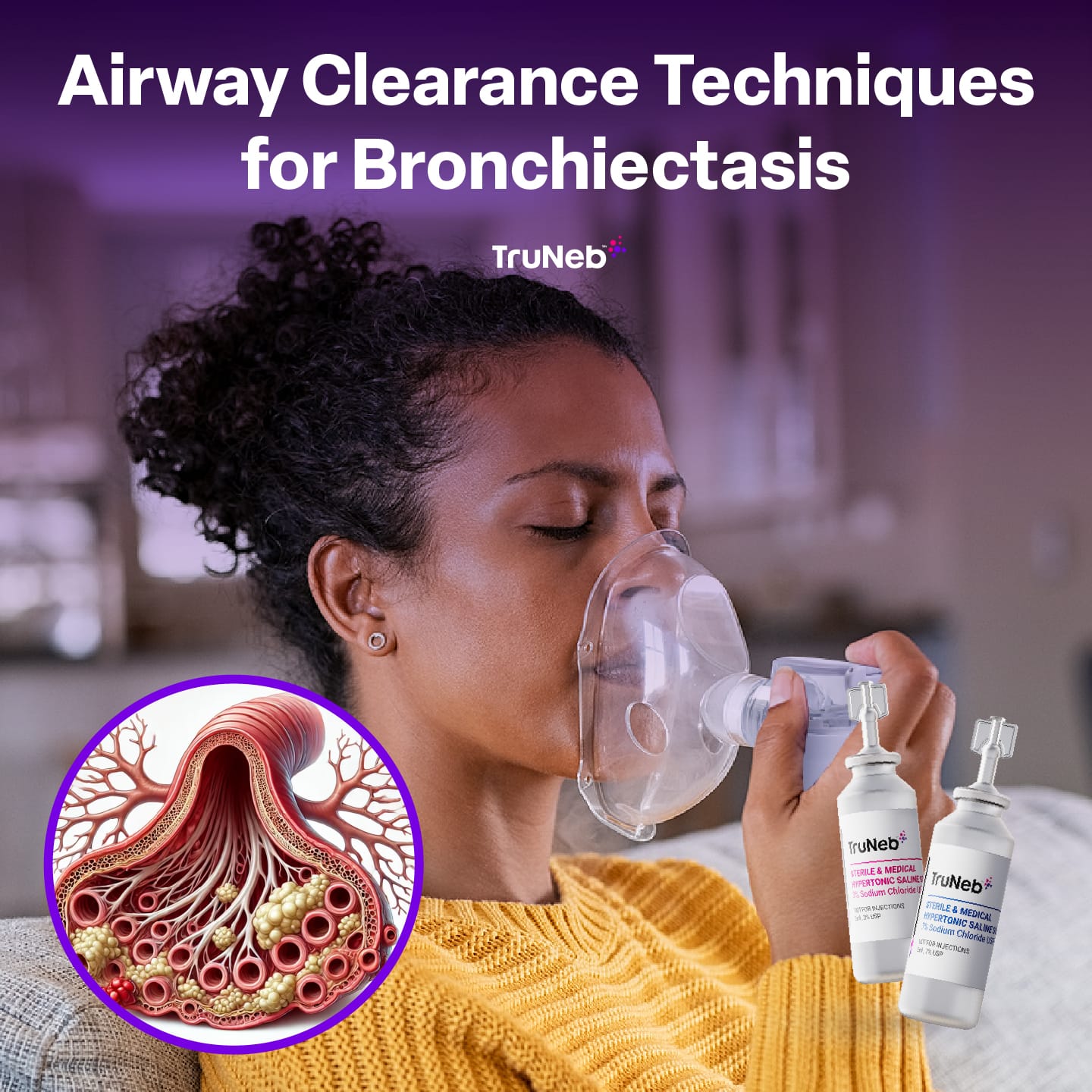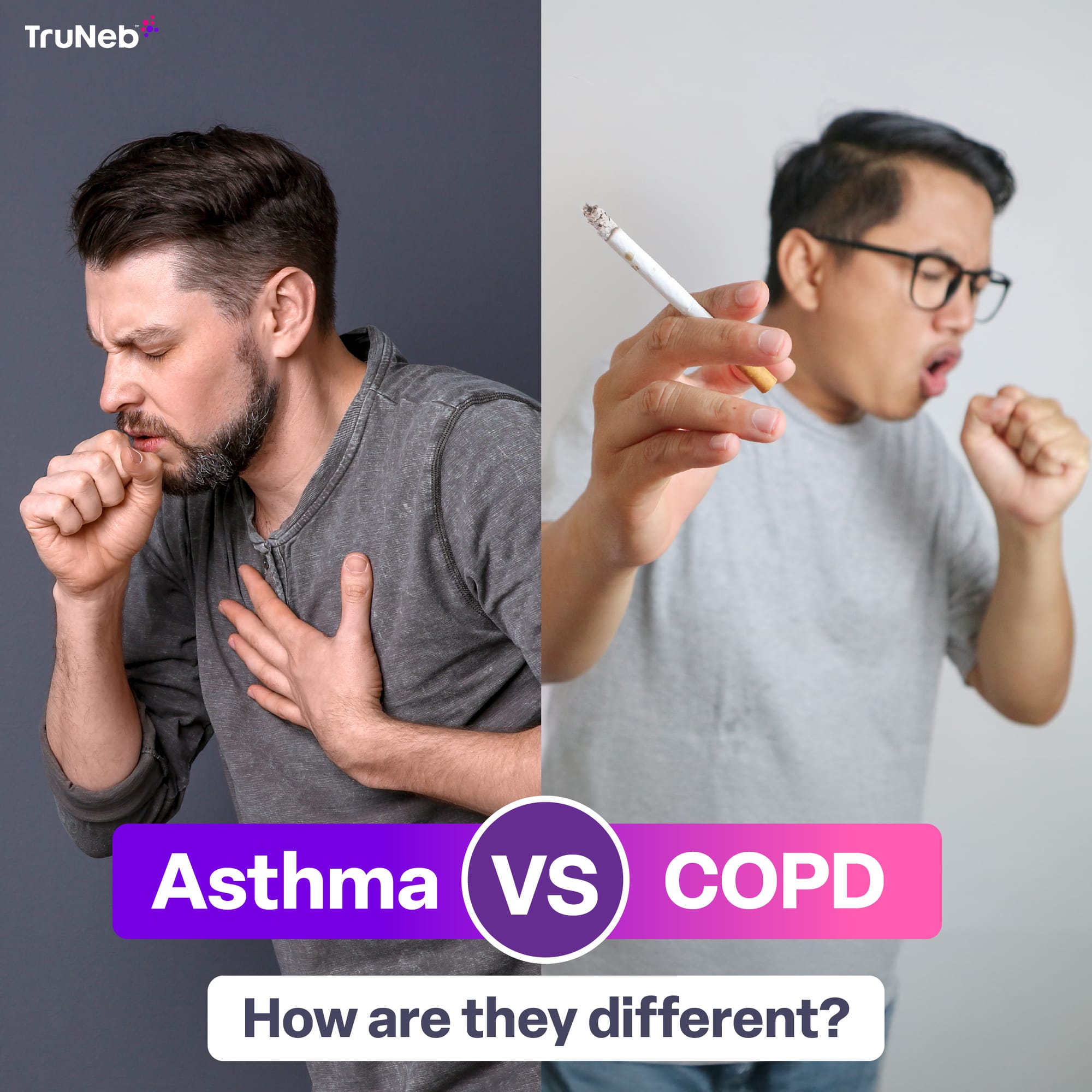On this page

If you or someone in your family has asthma or a lung condition like COPD, chances are you’ve heard about both inhalers and nebulizers. They’re the two most common tools for getting breathing medications straight to the lungs, but they work in very different ways.
So how do you know which one’s right for you?
In this article, we’ll walk you through the key differences between a nebulizer vs an inhaler, from how they work to when each one makes the most sense. Whether you’re managing daily symptoms or looking for backup during flare-ups, this guide will help you breathe a little easier knowing what to expect.
Let’s start with a quick side-by-side comparison — then we’ll break things down in more detail.
Difference Between Nebulizer and Inhaler
| Feature | Inhaler | Nebulizer |
|---|---|---|
| Portability | Very portable | Less portable (except mesh) |
| Speed | Fast (seconds) | Slower (5–15 minutes) |
| Ease of Use | Requires coordination | Easy for all ages |
| Best For | Quick relief | Severe symptoms, young kids |
| Medication Options | Many | Fewer |
| Power Required | No | Yes (unless mesh) |
Inhalers vs Nebulizers: What Are They?
Inhalers and nebulizers are both tools that help get medication straight into your lungs — fast. Instead of swallowing a pill and waiting for it to kick in, these devices deliver the medicine as a mist or aerosol that you breathe in, so it starts working right where it’s needed most.
They’re commonly used to treat conditions like asthma and COPD by opening up the airways, calming inflammation, and helping prevent flare-ups. While they work a little differently, both inhalers and nebulizers play a big role in helping people breathe easier day to day.
Types of Inhalers
Metered-Dose Inhalers (MDIs)
Metered-dose inhalers (MDIs) are the most common type of inhaler. They deliver a specific amount of medication in aerosol form with each puff. MDIs require you to coordinate your breath with the activation of the inhaler, which can be tricky for some people (especially kids and older adults). Using a spacer can help by holding the medication in place until you're ready to inhale it.
Dry Powder Inhalers (DPIs)
Dry powder inhalers (DPIs) deliver medication as a dry powder. These inhalers are breath-activated, meaning you need to inhale quickly and deeply to pull the medication into your lungs. DPIs are usually easier to use correctly than MDIs and don't need the same level of coordination. However, they require a stronger and more forceful inhalation, which may not be easy for everyone.

Soft Mist Inhalers (SMIs)
Soft mist inhalers (SMIs) are a newer type of inhaler that delivers medication in a slow-moving mist. This makes it easier to inhale the medication deeply into your lungs. SMIs don't require a spacer and are designed to be easy to use, giving you more time to inhale the medication. They're particularly helpful for people who have trouble using MDIs or DPIs.
Types of Nebulizers
Jet Nebulizers
Jet nebulizers (also called compressor nebulizers) are the most common type of neb. They use compressed air to turn liquid medication into a fine mist that you can inhale. They’re typically bulkier and noisier than other types, but they’re reliable and effective.
Ultrasonic Nebulizers
Ultrasonic nebulizers use high-frequency sound waves to create a mist from liquid medication. They’re quieter and usually more portable than jet nebulizers. They can be more expensive and may not work with all medications.

Mesh Nebulizers
Mesh nebulizers are the newest type and use a mesh with tiny holes to create a mist. They’re compact, quiet, and very efficient, making them great for travel. They can be more expensive and delicate, so they need careful handling.

Is a Nebulizer Better Than an Inhaler?
How inhalers work
Inhalers work by delivering a quick, measured dose of medication directly into your lungs as you breathe in. When you press down on the canister, it releases a fine mist or powder. That medication travels fast, usually offering relief within seconds. This is why inhalers are a go-to during asthma attacks or sudden flare-ups.
How nebulizers work
Nebulizers take a slower, steadier approach. They turn liquid medicine into a breathable mist that you inhale through a mouthpiece or mask over several minutes. Because you’re breathing it in gradually, the medication has time to reach deep into the lungs. That makes nebulizers especially helpful for people who need larger doses or have trouble using inhalers properly — like small children, older adults, or anyone recovering from a more severe respiratory illness.
How To Use Nebulizers vs Inhalers
How to use an inhaler (with or without a spacer)
- Shake it up: Before each use, give your inhaler a good shake. If it’s brand new (or hasn’t been used in a while), you may need to “prime” it by spraying a few test puffs into the air.
- Attach a spacer (if you use one): Spacers are helpful little add-ons that hold the medicine in a chamber, making it easier to breathe in the full dose — especially for kids or anyone who has trouble timing their breath.
- Get into the right position: Hold the inhaler upright with your thumb on the bottom and your index finger on the top. Place the mouthpiece in your mouth and seal your lips tightly around it.
- Breathe out: Exhale fully to empty your lungs. This helps make space for the medication.
- Breathe in and press down: Start breathing in slowly and deeply. As you begin to inhale, press down on the inhaler to release the medication. Keep breathing in for 3 to 5 seconds to draw the medicine deep into your lungs.
- Hold your breath: Try to hold your breath for about 10 seconds (or as long as you comfortably can). This gives the medication time to settle into your airways.
- Exhale gently: Breathe out slowly through your mouth or nose.
- Repeat (if needed): If you need another dose (and if prescribed), wait 30-60 seconds to a minute before repeating the steps.
How to use a nebulizer
- Get everything ready: Washing your hands is always a good start! Pour the prescribed amount of medication into the nebulizer cup. It will typically come in pre-measured vials.
- Put it all together: Follow the instructions that came with your nebulizer. For traditional models, you’ll attach the cup to the tubing and machine. If you’re using a mesh nebulizer, just snap the lid shut. Then connect your mouthpiece or mask.
- Find a comfy spot: Sit upright in a chair. Good posture helps the medicine reach deep into your lungs.
- Turn on the machine: Turn on the machine. You should see a light mist coming from the mouthpiece or mask — that means it’s working.
- Start your treatment: Place the mouthpiece in your mouth and seal your lips around it, or put the mask snugly over your nose and mouth. Breathe in slowly and deeply through your mouth, holding each breath for a second or two before exhaling.
- Keep going until the cup is empty: Nebulizer treatments usually take 10 to 15 minutes, but mesh nebulizers are usually done in about 5. Just relax and breathe normally until the mist stops.
- Clean up: Turn off the machine and clean the nebulizer parts (mouthpiece or mask, medication cup) according to the instructions. Keeping things clean helps prevent infections and keeps your device working properly.
Common Medications
Medications Used Most with Inhalers
- Corticosteroids: These reduce swelling and irritation in the airways, helping to prevent flare-ups. You’ll usually take them daily as a maintenance medication.
Common examples: Fluticasone (Flovent), Budesonide (Pulmicort) - Bronchodilators: These relax the muscles around your airways, making it easier to breathe — especially during an asthma attack or shortness of breath.Common examples: Albuterol (ProAir, Ventolin), Salmeterol (Serevent)
- Combination Inhalers: Some inhalers include both a corticosteroid and a bronchodilator for double the support. These are often used when symptoms are harder to control.
Common examples: Advair (fluticasone/salmeterol), Symbicort (budesonide/formoterol)
Medications Used Most With Nebulizers
- Albuterol: This fast-acting bronchodilator is one of the most common nebulized meds and provides quick relief during a flare-up.
- Ipratropium: Often paired with albuterol, this bronchodilator offers added support for opening the airways.
- Budesonide: An inhaled corticosteroid that helps reduce inflammation. It's used for long-term disease management.
- Formoterol: A long-acting bronchodilator used to help manage symptoms throughout the day.
- DuoNeb: A combo of albuterol and ipratropium, this treatment is often used for more severe symptoms and offers both quick and lasting relief.
Nebulizer vs Inhaler Effectiveness
How fast and effective are they?
- Inhalers: Inhalers are generally quicker to use, delivering medication directly to the lungs within seconds. This makes them ideal for immediate relief during an asthma attack.
- Nebulizers: Nebs take longer, usually taking anywhere from 5-15 minutes to deliver a full dose. However, they are effective for patients who need a continuous flow of medication, such as during a severe respiratory episode.
Effectiveness in Different Respiratory Conditions
- Asthma: Both inhalers and nebulizers are effective, but inhalers are often preferred for their portability and quick action. Nebulizers can be more effective for children or during severe attacks.
- COPD: Nebulizers can be more beneficial for severe COPD because of the longer administration time, allowing for deeper penetration of medication. Inhalers are also effective for daily management.
- Cystic Fibrosis and Bronchitis: Nebulizers are often preferred due to their ability to deliver medication deeply into the lungs over a longer period.
Pros and Cons of Inhalers
Advantages
- Portability: Inhalers are compact and easy to carry around, making them convenient for use on the go.
- Quick Administration: Inhalers deliver medication quickly, providing almost immediate relief from symptoms.
- Less Medication Waste: Inhalers provide precise doses, reducing the amount of wasted medication.
Disadvantages
- Coordination Required: Proper use of inhalers requires coordination between pressing the inhaler and breathing in, which can be challenging for some users.
- Higher Costs: Inhalers, especially combination ones, can be more expensive than nebulized medications, even with insurance.
Pros and Cons of Nebulizers
Advantages
- Easier for Severe Conditions: Nebulizers are ideal for severe respiratory conditions, providing continuous medication over a longer period.
- Effective for All Age Groups: They are especially useful for young children, the elderly, or anyone who has trouble using inhalers.
- Affordable Medications: Medications used in nebulizers are generally more affordable than those used in inhalers.
Disadvantages
- Bulky: Jet nebulizers are larger and less portable, making them less convenient for use outside the home (mesh nebulizers are compact).
- Longer Administration Time: It takes longer to deliver a dose of medication, which can be inconvenient for some people.
- Requires Power Source: Nebulizers need electricity or batteries to operate, which can limit their use in certain situations.
What the Research Says: Inhalers vs Nebulizers
When it comes to inhalers vs nebulizers, you might be wondering if one is better than the other.
A study published in 2002 observed outcomes of albuterol given by a metered dose inhaler with spacer vs. a nebulizer in asthmatics at an emergency department. As long as the inhaler was used correctly (especially with a spacer), it worked just as well as the nebulizer for treating asthma symptoms. Both groups had similar outomces. Another study including children and adults tested inhalers with spacers vs. nebulizers with beta agonists (like albuterol) for acute asthma treatment. The study found that there was no major difference in outcomes between the two devices.
The bottom line in the debate on a nebulizer vs inhaler is, both devices are effective. The “better” option depends more on the person using it. Age, coordination, how severe symptoms are, and even what’s most practical for daily routine should be considered.
Explore the TruNeb™ Portable Nebulizer
Even though it’s always recommended to have an emergency inhaler on-hand for an asthma attack or flare up, the TruNeb Portable Nebulizer offers the effectiveness of a nebulizer in an ultra compact size. Our rechargeable mesh nebulizer easily fits in the palm of your hand, ready to go anywhere with you.
*Article last updated 5/1/2025
*Article reviewed by a licensed registered respiratory therapist







